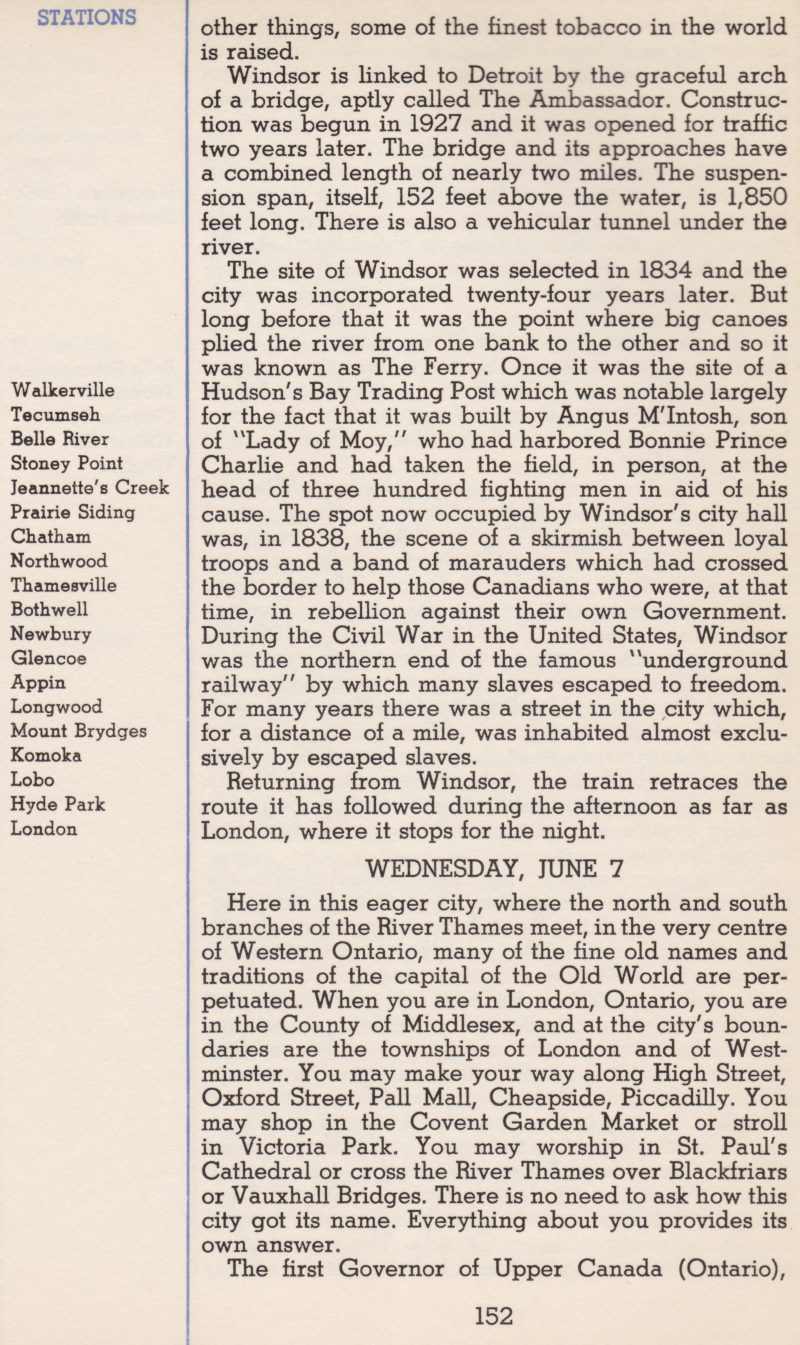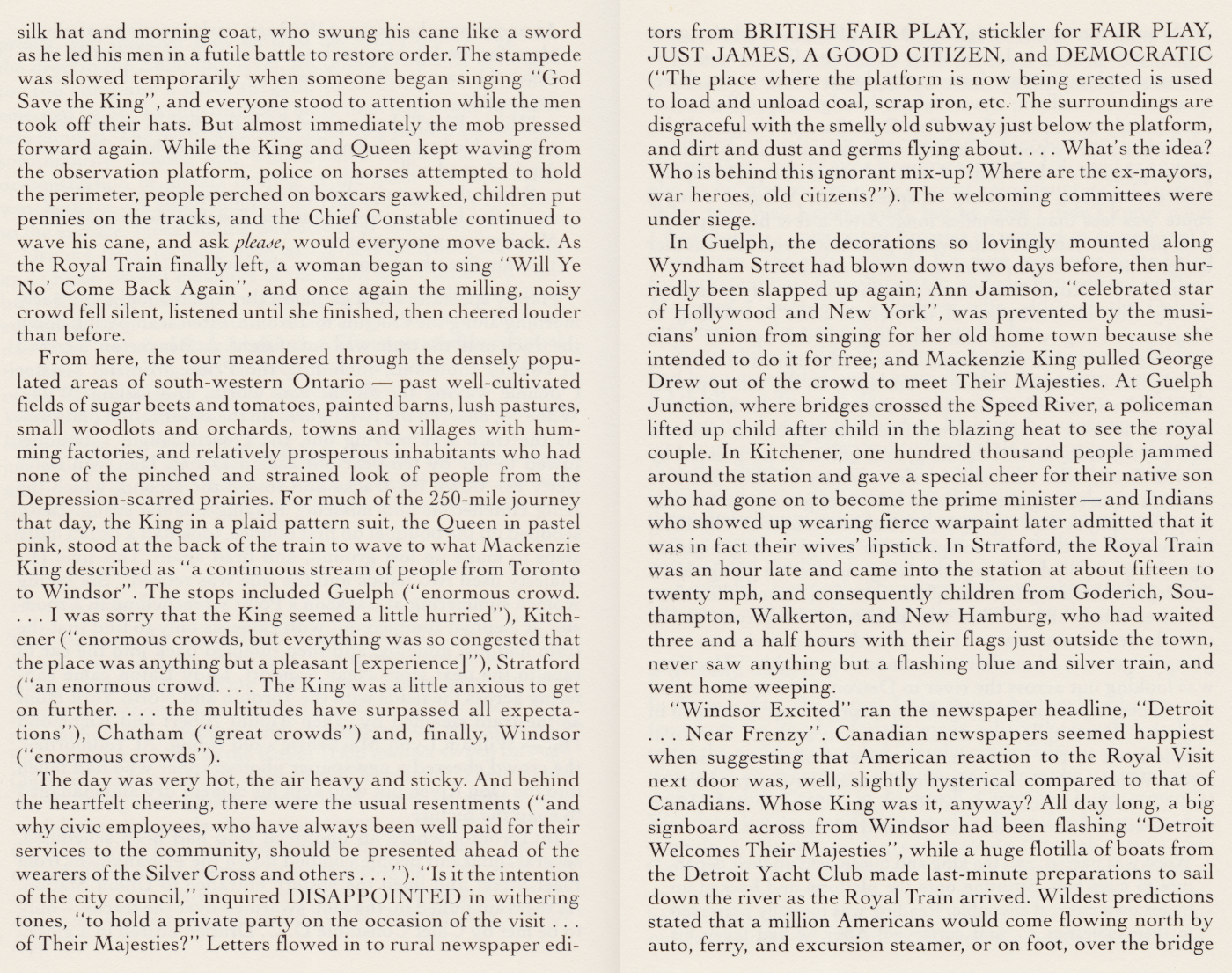... & late 1950s ETTs for CNR Subs: Brampton, Thorndale, Dundas, Strathroy, Longwood, Chatham.
In the mid-1980s, we were visiting the Harbourfront Antique Market and I had just selected the shell of an electric switchlamp (2 green & 2 red Fresnel lenses with an insulated port for a 'railway-weight' cable) ... because I thought it would be relaxing to carry it back to the Royal York, easy to put into a suitcase and fun to transport back home by train. The dealer said he hadn't seen one like it before, and I have not since.
'I've got something else you might be interested in.' he said.
He handed me an unpriced envelope with a number of train orders in it: Psgr Extra 6400 ... 1939 ...
I'm sure he was able to 'read' people pretty well, but I tried not to react to what I was seeing.
' ... Those are the routing instructions for the Royal Train.'
'Oh ... ' I tried to say this as nonchalantly as possible, and pretended to look for something which made them special. I think he wanted $30 for them - about $70 today.
From within a very large crowd at Dominion Square, my grandfather had seen King George VI and Queen Elizabeth on the balcony of the Windsor Hotel in Montreal. Later LC Gagnon and his mother watched the Royal Train pass Westmount station - with the King and Queen on the rear platform. The photos from the 1939 Canadian Geographic - such as the photo below - were well known to us growing up.
Under the Railway Technology & Systems radio button (above) you'll find a series done in 2019 about the CPR-conducted trip west. Burnout occurred before I could attempt to describe the CNR return trip - even though I wanted to finally examine these orders and determine if they were likely to be genuine.
A genuine set of fake Royal Train orders should be yellow, with a green clearance form on top and a staple holding everything together. Certainly a sheaf of winter slow orders for the Heron Bay Sub were presented in this form in 1977 ...
However, LC Gagnon's retained and practiced 'office procedures' from his time in Freight- and later Passenger Receipts at Windsor station in the mid-1950s suggested that the whole railway ran on straight pins and string. (During the Dirty Thirties, neither railway would be buying a new-fangled 'stapler' for every operator up and down the line ... 'They'll all be stolen!' ... And then the Travelling Auditors would have to visit every station ... to grill every station agent.) ... With straight pins, you just pull the pin out to remove a cancelled order, insert a new order exactly where you want it, and replace the pin.
Who knows what kind of protocols they were using in 1939 for this train? (Adolf Hungry Wolf included a long and fascinating list of operating preparation and practices for the Royal Train in one of his early books and I should provide some of those in the near future.) On board this train, it seems unlikely that the conductor was alone in his set of four facing seats with his rules, references and paperwork - just doing the usual 'conducting' - without Company managers hovering around, or without any kind of government, RCMP or military liaison. The train orders wouldn't be in his jacket pocket as 'his little secret', while the engineer was entrusted with navigating the road ahead.
Prime Minister Mackenzie King was essentially the 'host' and tour operator for almost the entire Royal Tour. He'd often pop off the train, a few cars from the tailend, and scoot back to the observation car to ensure that all went well if the Royal Couple chose to detrain at a division point.
The train orders which I have owned for almost half of their lives are not particularly glamourous and they don't commemorate special stops or special events during the 'public day'. They represent good business-like train operations.
... You're on a steam fan trip and it's the end of the day. You've descended and climbed the car steps a number of times for runpasts, you've waited a few times while the engine was being serviced, you've stuck your head out vestibule doors with the smell of creosote, hot brake shoes and sulphur in the buffeting wind, you've been jostled by hundreds of excited people. You're hot, tired and sticky and ready to go home. You'll be content when the day is over - everything has gone well. There are no more scheduled stops - you're staying inside the train now - and it really seems to be making good time. The engine is running faster than it has all day and the whistling seems continuous as the miles fly by.
... I can't accurately synthesize the experience of the King and Queen on the evening of Tuesday June 6 - the day before they crossed the border at Niagara Falls. They were acting on an unprecedented British and Canadian governmental request. Their developing mission: To inspire Canadians, Americans and Newfoundlanders to resolutely support Britain through the impending disaster Europe was expected to experience.
Below is a rather extensive presentation about June 6, 1939 - the day on which those train orders took effect.
 |
| from: Canadian Geographical Journal; July 1939; Canadian Geographical Society. |
Above: At London on the morning of June 7.
 |
| Daylight Upon Magic; Tom MacDonnell; 1989; Macmillan. ISBN 0-7715-9229-9 |
The Royal Visit = La Visite de Nos Souverains (1939)
On the morning of Wednesday, June 7, the King and Queen begin their visit at London.

































